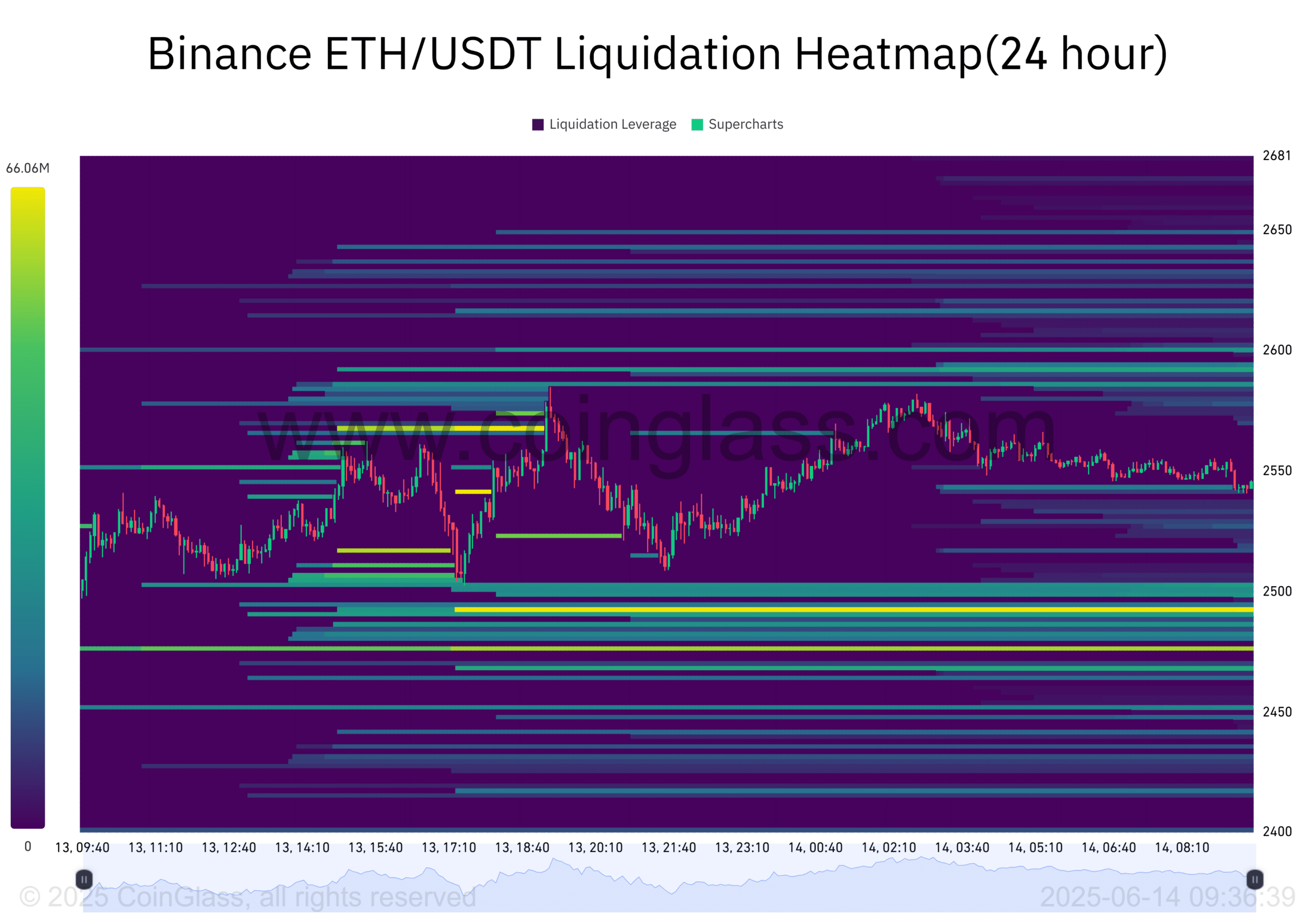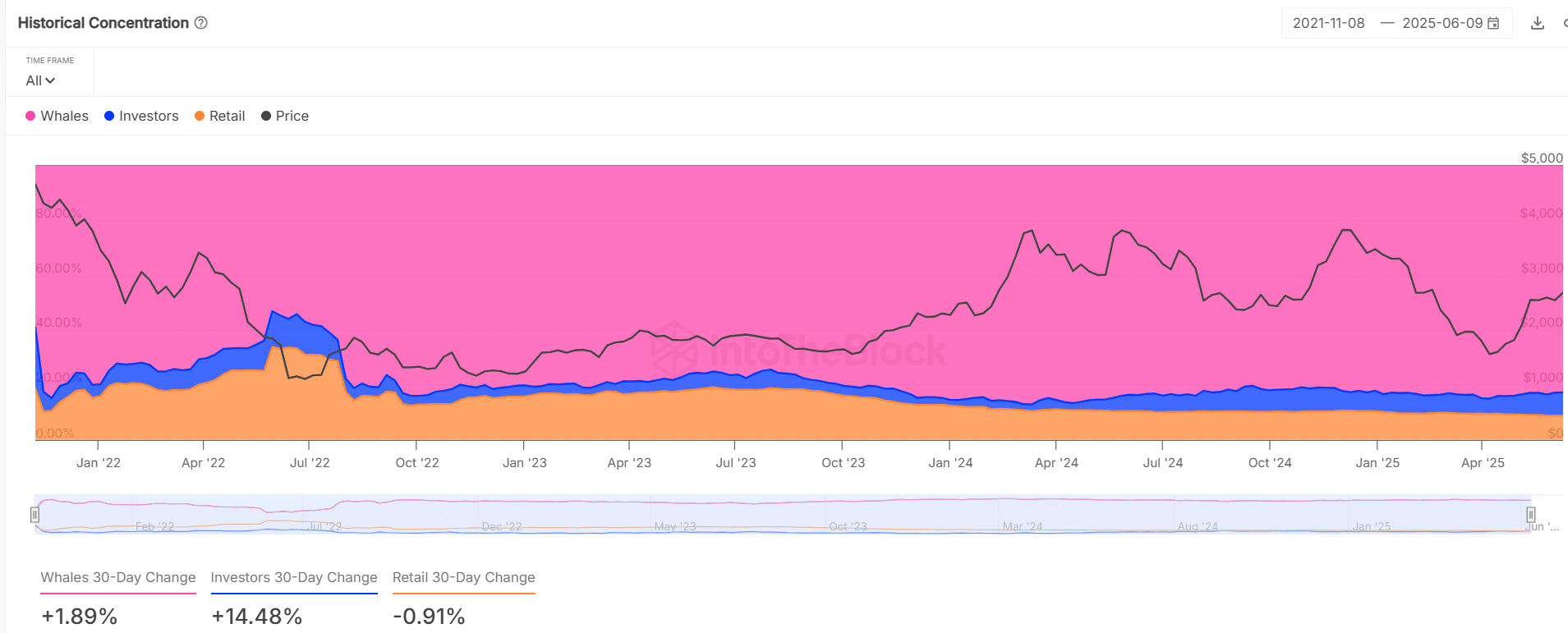-
Ethereum whales are significantly increasing their holdings amid declining retail activity, signaling a potential shift in market dynamics.
-
While large investors accumulate over 1.49 million ETH, retail participation and transaction volumes show notable weakness, reflecting cautious market sentiment.
-
According to COINOTAG sources, this accumulation by whales, now controlling nearly 27% of circulating ETH, may hint at a long-term bullish outlook despite current resistance levels.
Ethereum whales accumulate 1.49M ETH as retail activity declines, creating cautious optimism amid resistance and low conviction in the crypto market.
Whale Accumulation Signals Strategic Positioning in Ethereum Market
Over the last 30 days, Ethereum’s largest holders, including whales and shark wallets, have increased their ETH holdings by approximately 1.49 million tokens. This surge has elevated their collective share to nearly 27% of the circulating supply. Such accumulation typically indicates a strategic move by institutional or high-net-worth investors preparing for potential market shifts. Meanwhile, retail traders appear to be taking profits, which has contributed to a decline in smaller address activity. This dynamic suggests a redistribution of supply from less confident retail participants to more conviction-driven whales, potentially setting the stage for future price stabilization or growth.
Retail Participation Declines Amidst Market Uncertainty
Despite the growing dominance of large holders, retail engagement with Ethereum has weakened considerably. Data shows a sharp drop in new addresses by over 26%, while active addresses have fallen by more than 55% in the past week. Additionally, high-value transactions exceeding $1 million have decreased by 45%, and those above $10 million have disappeared entirely. Conversely, smaller transfers ranging from $10 to $100 have more than doubled, indicating a rise in short-term speculative activity rather than strong conviction. These trends highlight a cautious retail base, reluctant to commit significant capital amid uncertain market conditions.

Resistance Levels Pose Challenges to ETH Price Momentum
Ethereum’s recent price movements have encountered significant resistance between the $2,550 and $2,650 range, as revealed by the latest liquidation heatmap. This zone has triggered a concentration of long liquidations, causing leveraged traders to exercise caution. Should Ethereum fail to breach this resistance, the market risks a rapid correction due to unwinding liquidity. Conversely, a successful breakout could force short liquidations, potentially accelerating upward momentum. This resistance area thus represents a critical battleground, influencing whether ETH can sustain its current price levels or face downward pressure.

Funding Rates Indicate Cautious Optimism Among Futures Traders
Ethereum’s Funding Rate has remained slightly positive at +0.0045%, reflecting a mild long bias among futures traders. However, this figure is relatively subdued compared to levels typically seen during strong breakout phases. The absence of significant leverage accumulation suggests that traders are adopting a cautious stance, balancing optimism with risk management. Without a marked increase in Funding Rate or Open Interest, the market is likely to remain range-bound, reflecting a wait-and-see approach. This tempered enthusiasm underscores the need for a clear catalyst to drive decisive price action.

Ownership Concentration Shifts Toward Whales and Institutional Investors
Recent on-chain data reveals a notable shift in Ethereum ownership, with whales increasing their holdings by 1.89% and investors by 14.48% over the past month. In contrast, retail holders have reduced their share by nearly 1%. This redistribution highlights a capital rotation from less committed retail participants to more strategic, long-term holders. Such concentration can enhance Ethereum’s market resilience by reducing supply volatility. As whales consolidate control, the potential for sustained bullish momentum grows, although retail participation remains a critical factor for broader market strength.

Conclusion
Ethereum’s current market landscape is characterized by significant whale accumulation amid waning retail interest, creating a cautious yet potentially bullish environment. Resistance near $2,650 remains a critical hurdle, with funding rates indicating measured optimism rather than aggressive positioning. For ETH to break out of its current range, a resurgence in retail activity combined with a decisive breach of resistance levels will be essential. Until then, investors should monitor on-chain metrics and market sentiment closely to gauge the evolving dynamics of Ethereum’s price action.






